GrabCAD
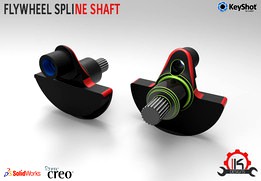
Motor Cycle Engine Internal Setup - Flywheel Spline Shaft
by GrabCAD
Last crawled date: 1 year, 10 months ago
The Final files for this Connecting Rod Design, enjoy,Solidworks 2014 files with added IGES/STEP,Parasolid,STL & Creo Part files as well.
PLEASE COMMENT & PRESS THE LIKE BUTTON IF YOU DOWNLOAD ( THATS THE HEART SHAPED BUTTON- TOP RIGHT)
In this Project i have been trying to create a "Motor Cycle Engine" Internal Setup. This model i have learned in one tutorial video.The whole project has been carried out mainly in two software one is PTC CREO & other is Solidworks 2014 for GRAB CAD audience. This will be uploaded part by part as its long one.
A flywheel is a rotating mechanical device that is used to store rotational energy. Flywheels have a significant moment of inertia and thus resist changes in rotational speed. The amount of energy stored in a flywheel is proportional to the square of its rotational speed. Energy is transferred to a flywheel by applying torque to it, thereby increasing its rotational speed, and hence its stored energy. Conversely, a flywheel releases stored energy by applying torque to a mechanical load, thereby decreasing the flywheel's rotational speed.
Common uses of a flywheel include:
1)Providing continuous energy when the energy source is discontinuous. For example, flywheels are used in reciprocating engines because the energy source, torque from the engine, is intermittent.
2)Delivering energy at rates beyond the ability of a continuous energy source. This is achieved by collecting energy in the flywheel over time and then releasing the energy quickly, at rates that exceed the abilities of the energy source.
3)Controlling the orientation of a mechanical system. In such applications, the angular momentum of a flywheel is purposely transferred to a load when energy is transferred to or from the flywheel.
4)Flywheels are typically made of steel and rotate on conventional bearings; these are generally limited to a revolution rate of a few thousand RPM.Some modern flywheels are made of carbon fiber materials and employ magnetic bearings, enabling them to revolve at speeds up to 60,000 RPM.
Carbon-composite flywheel batteries have recently been manufactured and are proving to be viable in real-world tests on mainstream cars. Additionally, their disposal is more eco-friendly.
(Source:Wikipedia)
I have uploaded only one fine rendered image with full detailed in Photoshop & Keyshot. I hope you guys like it.
***So stay tuned for more upcoming parts***.
PLEASE COMMENT & PRESS THE LIKE BUTTON IF YOU DOWNLOAD ( THATS THE HEART SHAPED BUTTON- TOP RIGHT)
In this Project i have been trying to create a "Motor Cycle Engine" Internal Setup. This model i have learned in one tutorial video.The whole project has been carried out mainly in two software one is PTC CREO & other is Solidworks 2014 for GRAB CAD audience. This will be uploaded part by part as its long one.
A flywheel is a rotating mechanical device that is used to store rotational energy. Flywheels have a significant moment of inertia and thus resist changes in rotational speed. The amount of energy stored in a flywheel is proportional to the square of its rotational speed. Energy is transferred to a flywheel by applying torque to it, thereby increasing its rotational speed, and hence its stored energy. Conversely, a flywheel releases stored energy by applying torque to a mechanical load, thereby decreasing the flywheel's rotational speed.
Common uses of a flywheel include:
1)Providing continuous energy when the energy source is discontinuous. For example, flywheels are used in reciprocating engines because the energy source, torque from the engine, is intermittent.
2)Delivering energy at rates beyond the ability of a continuous energy source. This is achieved by collecting energy in the flywheel over time and then releasing the energy quickly, at rates that exceed the abilities of the energy source.
3)Controlling the orientation of a mechanical system. In such applications, the angular momentum of a flywheel is purposely transferred to a load when energy is transferred to or from the flywheel.
4)Flywheels are typically made of steel and rotate on conventional bearings; these are generally limited to a revolution rate of a few thousand RPM.Some modern flywheels are made of carbon fiber materials and employ magnetic bearings, enabling them to revolve at speeds up to 60,000 RPM.
Carbon-composite flywheel batteries have recently been manufactured and are proving to be viable in real-world tests on mainstream cars. Additionally, their disposal is more eco-friendly.
(Source:Wikipedia)
I have uploaded only one fine rendered image with full detailed in Photoshop & Keyshot. I hope you guys like it.
***So stay tuned for more upcoming parts***.
Similar models
grabcad
free

Flywheel Design
...*note** next project is motor cycle engine internal setup .
coming soon.............................................so stay tuned
grabcad
free

Flywheel
.... conversely, a flywheel releases stored energy by applying torque to a mechanical load, thereby decreasing its rotational speed.
grabcad
free

Motor Cycle Engine Internal Setup - Flywheel Taper Shaft
...ndered image with full detailed in photoshop & keyshot. i hope you guys like it.
***so stay tuned for more upcoming parts***.
grabcad
free

Fly Wheel Design By Khurram Butt
.... conversely, a flywheel releases stored energy by applying torque to a mechanical load, thereby decreasing its rotational speed.
grabcad
free

Flywheel
...el's stored energy is by increasing or decreasing its rotational speed by applying a torque aligned with its axis of symmetry
grabcad
free

Flywheel
... moment of inertia. the amount of energy stored in a flywheel is proportional to the square of its rotational speed and its mass.
grabcad
free

Motor Cycle Engine Internal Setup - 1199 Panigale's Superquadro engine -Connecting Rod & Flywheel Assembly
...dered image with full detailed in photoshop & keyshot. i hope you guys like it.
***so stay tuned for more upcoming parts***.
grabcad
free

FlyWheel
...ywheel is a mechanical device used in engines to store energy and to reduce fluctuation so that we can get constant speed in rpm.
grabcad
free

Energy Harvester using Footsteps
...rabcad
harvesting energy using gearing mechanism and a flywheel to continuously rotating the shaft generator to generate energy.
grabcad
free

Flywheel
...tinuous. for example, a flywheel is used to smooth fast angular velocity fluctuations of the crankshaft in a reciprocating engine
Flywheel
3d_export
$10

Clutch disk 3D Model
...sedan speed gearbox differential drive shaft pressure plate bearing flywheel engine vehicle gear axle camshaft clutch disk 3d model...
3d_ocean
$4

Clutch disk
...auto axle bearing camshaft car clutch differential drive engine flywheel gear gearbox plate pressure sedan shaft speed vehicle a...
3d_export
$30
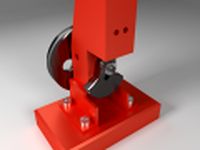
Compressed Air Engine 3D Model
...air engine 3d model 3dexport pneumatic compressor engine motor flywheel shaft camshaft piston valve block engineering compressed-air driven compressed...
3d_export
$75
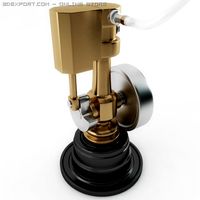
Minature Wobble Steam Engine 3D Model
...3dexport minature wobble steam engine thermo thermodynamics combustion boiler flywheel crankshaft pistol cylinder power energy compressed air minature wobble...
3d_export
$5

six cylinder radial engine flywheel
...lywheel 3d model. this is installed basically to store electrical energy and deliver energy as a mechanical coupled with gear box
3d_export
$229

GT500 Engine - Disassembled Engine
...head<br>cylinder head bolts<br>engine tools<br>exhaust manifold - l<br>exhaust manifold - r<br>flywheellt;br>fuel injector system: -fuel injectors - l -fuel injectors -...
turbosquid
$1

Flywheel
...ee 3d model flywheel for download as ige, obj, stl, and sldpr on turbosquid: 3d models for games, architecture, videos. (1221999)
turbosquid
$1

Flywheel
...ee 3d model flywheel for download as ige, obj, stl, and sldpr on turbosquid: 3d models for games, architecture, videos. (1220977)
turbosquid
$1

Flywheel(1)
...alty free 3d model flywheel for download as ige, obj, and stl on turbosquid: 3d models for games, architecture, videos. (1217730)
turbosquid
$1

Flywheel
...alty free 3d model flywheel for download as ige, obj, and stl on turbosquid: 3d models for games, architecture, videos. (1216111)
Spline
3ddd
$1

Outdoor Gym Set 1
...in the modifier stack "ground" at the level of spline to change its configuration to the desired shape. uvw...
3ddd
$1

SPLINE
...spline
3ddd
несуществующая модель.
3ddd
$1

Foscarini / Caboche Lamps collection
...and uncollapsed modifier stack. many lamp parts are editable spline for easy modification, and every repeated pieces are instances...
3ddd
$1

Мебельный гибрид комода и дивана «Two Be»
...на декоративном канате, а также поставить галочки в edit spline для видимости во вьюпорте и при...
3ddd
$1

Armchear rattan
...ротанга. идеален для ближнего плана. плетение сделано геометрией (renderable spline, легко оптимизируется с помощью счетчика интерполяции сплайна и счетчика...
3ddd
free
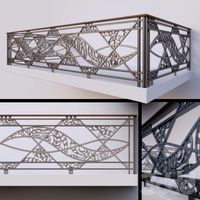
Кованное ограждение
...балкон в сцене два варианта модели, editable poly и splinesweep(для удобства...
3d_ocean
$5

Cubic Eagle Model
...cinema 4d eagle game minecraft model poly rig rigs spline i pleased to present you a qualitative model of...
3d_ocean
$5

Springman - Personnal creation High Poly Character
...character character character concept max mesh polygon render setup spline spring springman springman : a personnal creation character. high...
3d_ocean
$6

Weed Leafs
...perfectly uvw mapped textures included weed leaf created with spline.. ...
3d_ocean
$19

Gate & Fence
...shapes and quality – all elements are generated by spline formats included: *.obj, *.c4d, (generators & poligons) *.fbx,...
Shaft
3d_export
$10
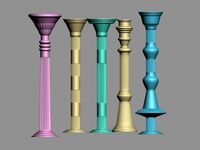
Column 3D Model
...column 3d model 3dexport column pilar shaft stanchion upright architecture file fasade exterior exterlor design\ column...
3d_ocean
$19

Oil Pump (Pumpjack)
...oilfield oilpump petrol pipe pump pumping pumpjack refinery rig shaft sweep tank unit low polygonal 3d model of pumpjack...
3d_export
$10
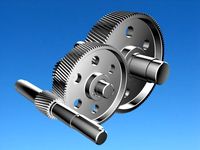
Gear 3D Model
...gear 3d model 3dexport gear reducer helical mechanism evolvent shaft wheel key gear 3d model download .c4d .max .obj...
3d_ocean
$12

Exploded Half Axle
...chassis constant cv drive engine gearbox joint part planetary shaft velocity wheel an exploded half axle modeled to specs...
3d_ocean
$8
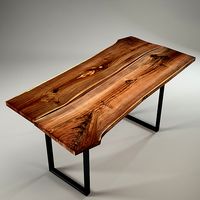
Wood Slab Table by IGN-Design Switzerland
...wood slab table by ign-design switzerland 3docean bar rod shaft stick tree section wood section table wood slab wood...
3d_ocean
$6

Bell Pepper
...red. each bell pepper is split in body and shaft no external textures. standard vray materials/ blend material and...
3d_ocean
$7
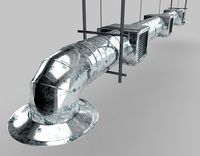
Air-duct
...cooling duct heating hvac industrial mechanical office pipe piping shaft ventilation high quality industrial air duct ventilation model. created...
3d_ocean
$3

Piston and crankshaft assembly
...ton and crankshaft assembly modeled to specs. for other car-related merchandise visit my profile. don’t forget to rate and enjoy!
3d_ocean
$40

Hovercraft
...which are also textured. the engines have moveable prop shaft and rudders for animation...
3d_ocean
$15
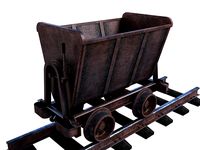
Wagon
...lurry mine old ore pit rail railroad rust rusty shaft track tram trolley vintage waggon wagon high poly realistic...
Internal
3ddd
$1
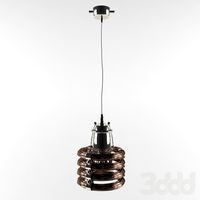
Alet - 3044
...ированный никель и бронзированная медь. рассчитан на одну лампу мощностью 50 вт с цоколем gu10. размеры вхд, см: 10х12 (диаметр).
3ddd
$1

DAFNE - 3470
...dafne - 3470
3ddd
lamp international
3d max 2009,vray 1.5 sp4a,fbx,obj
3ddd
$1

RH VICTORIAN HOTEL FLOOR LAMP + DESK LAMP
...of flame-powered lanterns with the modern drama of an internal candelabra. dimensions overall: 18" diam., 72"h cord: 78"l weight:...
3ddd
$1

carpanese bed
...letto imbottito misure interne 180 x 200 padded bed internal measures 180 x 200 l.240 p.232 h.134 стэки не...
3ddd
$1

Бра
...бра
3ddd
lamp international
бра фирмы lamp international. текстуры в архиве.
3ddd
$1

IFEX Lamp
... lamp , ifex
references from ifex ( indonesia international furniture expo )
3d_ocean
$19

Cessna Citation Latitude private jet
...jet.model created with blender3d version 2.76.rendering previews with blender internal render software.renderings created with subd 2,until my 3d...
3d_export
$189

Human Female Internal Organs Anatomy 3D Model
...y
human female internal organs anatomy 3d model download .c4d .max .obj .fbx .ma .lwo .3ds .3dm .stl digitallab3d 104045 3dexport
3d_export
$69
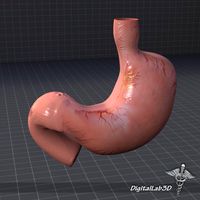
Stomach External 3D Model
...3d model 3dexport digitallab3d people stomach anatomy biology medical internal organs digestion vertebrates 3ds max maya c4d lwo lxo...
3d_export
$129

International 9900i Tractor Truck 2004 3D Model
...14
international 9900i tractor truck 2004 3d model download .c4d .max .obj .fbx .ma .lwo .3ds .3dm .stl humster3d 113255 3dexport
Cycle
3d_export
$30

Samsung Galaxy Note 4 Charcoal Black 3D Model
...edge six four phone flagship iphone apple quality blender cycle samsung galaxy note 4 charcoal black 3d model dragosburian...
3d_export
$6

Tron Light Cycle 3D Model
...tron light cycle 3d model
3dexport
tron light cycle bike
tron light cycle 3d model laine 81974 3dexport
3d_export
$49

Old bicycle 3D Model
...ransport pedal saddle seat cycling vintage road antique people sport handlebars
old bicycle 3d model dzejsi.models 72672 3dexport
3d_ocean
$19

Penny farthing bicycle
...n
3d model of penny farthing bicycle .object are grouped.rendering scene with,materials are include and detailed, with all files.
3d_ocean
$69
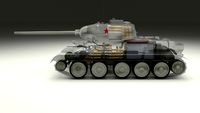
T-34/85 Interior/Engine Bay Full Winter Camo
...interior/engine bay full winter camo 3docean 85mm army blender cycle engine full gun interior medium military red russian soviet...
3d_ocean
$85

Mercedes 300SL Roaster Top
...the model comes in five formats: -.blend, rendered with cycle, as seen in the images; -.obj, with...
3d_ocean
$15

Iphone 6S Gold
...the model comes in five formats: -.blend, rendered with cycle, as seen in the images; -.obj, with materials applied...
3d_ocean
$15

Iphone 6S Rose Gold
...the model comes in five formats: -.blend, rendered with cycle, as seen in the images; -.obj, with materials applied...
3d_ocean
$99

T34/76 Tank with Interior HDRI
...t34/76 tank with interior hdri 3docean 85mm army blender cycle engine full gun interior medium military red russian soviet...
3d_ocean
$4

Shovel
...the model comes in five formats: -.blend, rendered with cycle, as seen in the images; -.obj, with materials applied...
Motor
3d_export
$99

Buick Skylark convertible 1964 3D Model
...1965 1966 1967 classic 2-door coupe sport convertible general motor us american buick skylark convertible 1964 3d model humster3d...
3d_export
$89

GMC Yukon Hybrid 2013 3D Model
...2013 3d model 3dexport gmc yukon hybrid 2013 general motor avto car vehicle auto automobile cars 3d model higt...
3d_export
$89

GMC Yukon SLT 3D Model
...yukon slt 3d model 3dexport gmc yukon slt general motor avto car vehicle auto automobile cars 3d model higt...
3ddd
$1

Currey & Company Orion
...bulb type: candelabra chain length: 6 feet freight information: motor freight item wt: 13 pkg wt: 34 the model...
3d_ocean
$85

Ferrari 488 Spider 2016
...scheduled to make its official premiere during the frankfurt motor show this september. the italian company explains this is...
3d_export
$16

W Motors Lykan Hypersport logo 3D Model
...adge marque
w motors lykan hypersport logo 3d model download .c4d .max .obj .fbx .ma .lwo .3ds .3dm .stl rmodeler 104172 3dexport
3d_export
$129

Yamaha XJ6 2009 3D Model
...2011 2012 2013 2014 super sport motorcycle motorbike bike motor cycle japan yamaha xj6 2009 3d model download .c4d...
cg_studio
$50

Rat Rod3d model
...vintage retro oldschool old classic american car antique vehicle motor .dae .obj .blend - rat rod 3d model, royalty...
cg_studio
$50

Hot Rod3d model
...model cgstudio classic old car vehicle vintage abtique hotrod motor retro oldtimer oldschool american blak metal .x .dae .obj...
cg_studio
$99
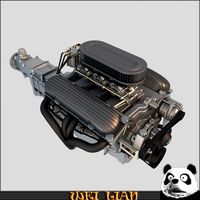
Engine 023d model
...engine 023d model cgstudio v8 car engine motor vehicle cylinder power realistic part mechanical piston exhaust pipe...
Setup
3ddd
$1

Dering Hall Torino Chandelier
...geometry, one multi-submaterial for model for easy change or setup object at 0.0.0, clean and light scene. the archive...
3ddd
$1

Currey & Company Balthazar
...geometry, one multi-submaterial for model for easy change or setup object at 0.0.0, clean and light scene. the archive...
3ddd
$1

Три ковра 4
...зеленый, тёмно-серый, бежевый внимание!!! для корректного отображения: system units setup - millimeters rendering > effects > hair and fur...
3ddd
$1

Currey & Company Orion
...geometry, one multi-submaterial for model for easy change or setup object at 0.0.0, clean and light scene. the archive...
3d_ocean
$12

Wheel Smart Electric Scooter
...2009 file mb contains all vray materials and render setup the model is suitable for extream...
3d_ocean
$9
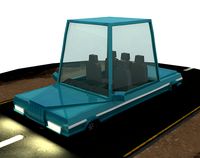
Low Poly Rigged Cartoon Car
...-low poly -textured -riged -ready to animate -and light setup ...
3d_ocean
$19
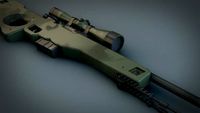
AWP Sniper rifle (CS GO)
...the model contains 42288 polygons – not rigged, scene setup / lighting / environments from the...
3d_ocean
$12

Desk accessories (pen, eraser, etc.)
...the model contains 58530 polygons – not rigged, scene setup / lighting from the preview, are...
3d_ocean
$5

Callisto - Realistic HD model
...bump maps where applicable, as well as lights and setup scene for vray. a short 360 frame rotation animation...
3d_ocean
$7

Glasses 3D model
...glasses lens lense lenses luxury maxwell render nerd optic setup specs spectacles studio style sunglasses tom ford tomford tortoise...
Engine
3d_export
$10

Wooden Pallet Low Poly 3D Model
...props lowpoly industrial wood 3d unity udk unreal games engine detailed wooden wooden pallet low poly 3d model turcpaul...
3d_export
$10

Old Pallet Low Poly 3D Model
...lowpoly industrial wood old 3d unity udk unreal games engine detailed fbx obg 3ds old pallet low poly 3d...
3d_export
$40

Turboprop twin engine 3D Model
...boprop twin engine plane airplane civilian commercial passenger medium range
turboprop twin engine 3d model tartino 7205 3dexport
3d_export
$29

Female cyborg 3D Model
...bot machine female woman bionic metalic android human science enginering technology future metal fantasy technics sci-fi female cyborg 3d...
3d_export
$75

Falcon3D C414 Chancellor Bare Metal 3D Model
...civil general aviation executive transport charter professional place twin engine propeller commercial ambulance falcon3d c414 chancellor bare metal 3d...
3d_export
$85

Falcon3D C414 Chancellor F02 3D Model
...civil general aviation executive transport charter professional place twin engine propeller commercial ambulance falcon3d c414 chancellor f02 3d model...
3d_export
$15
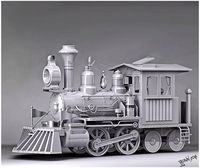
Classic Steam Train 3D Model
...steam train 3d model 3dexport antique black classic coal engine historic historical iron locomotive metal old power rail railroad...
3d_export
$45
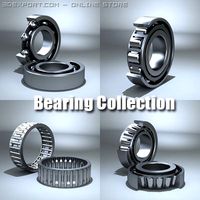
4 Bearing Collection 3D Model
...ballbearing roller ball tapered bearing skf needle engineering gearbox engine car industrial thrust spherical radial machinery race cage collection...
3d_export
$100

2011 Hyundai Verna 3D Model
...hyundai verna sonata tucson avante tuscani genesis gamma gasoline engine coupe sports korean 3dken 2011 hyundai verna 3d model...
3d_ocean
$69

T-34/85 Interior/Engine Bay Full Winter Camo
...nterior and engine bay. the model contains a highly detailed interior(controls, gauges, machine gun, ammo, radio, main gun) an...
